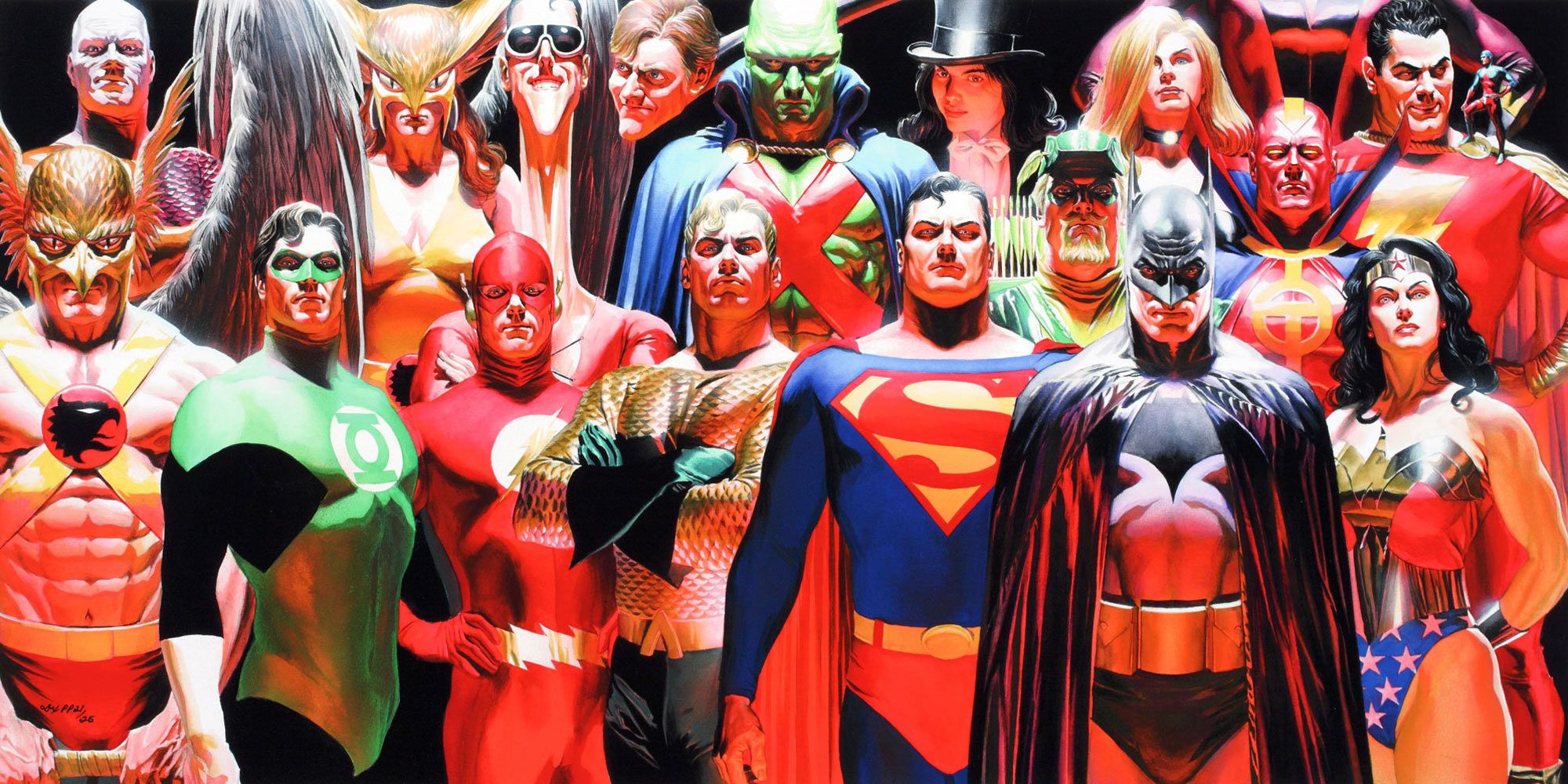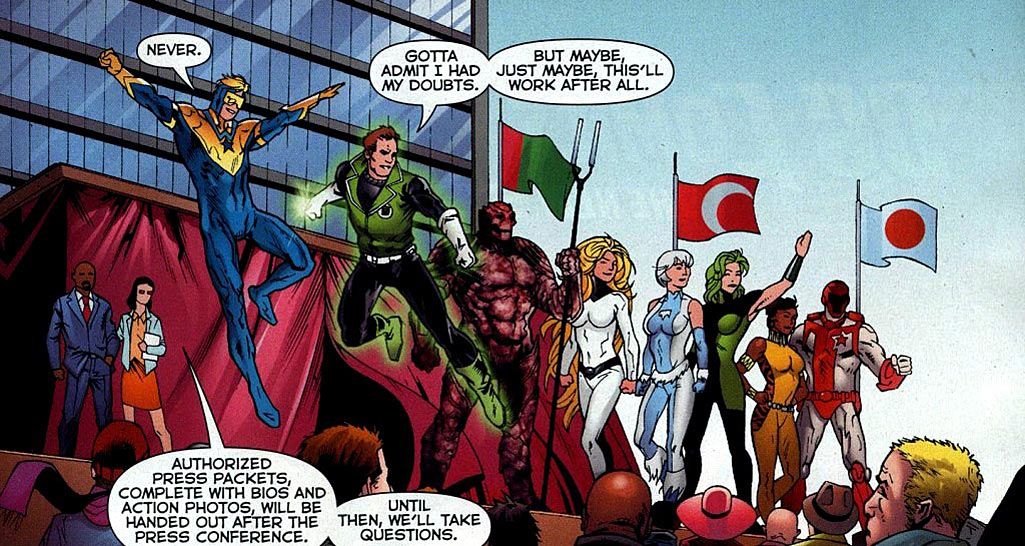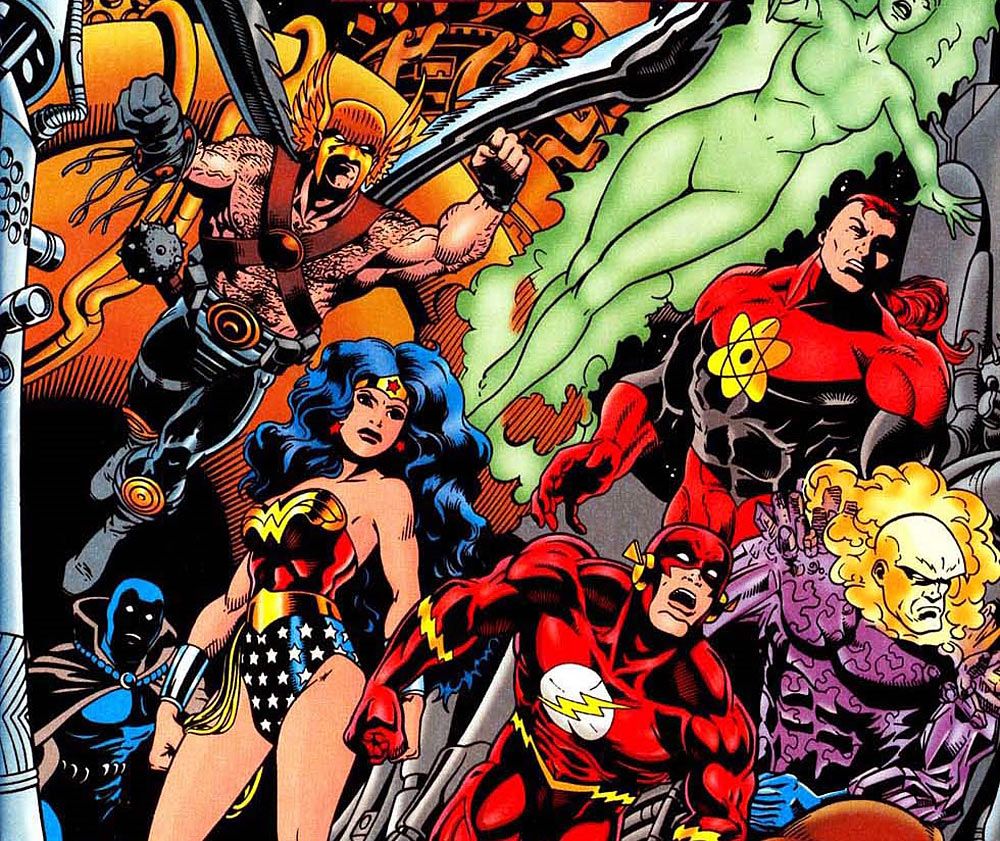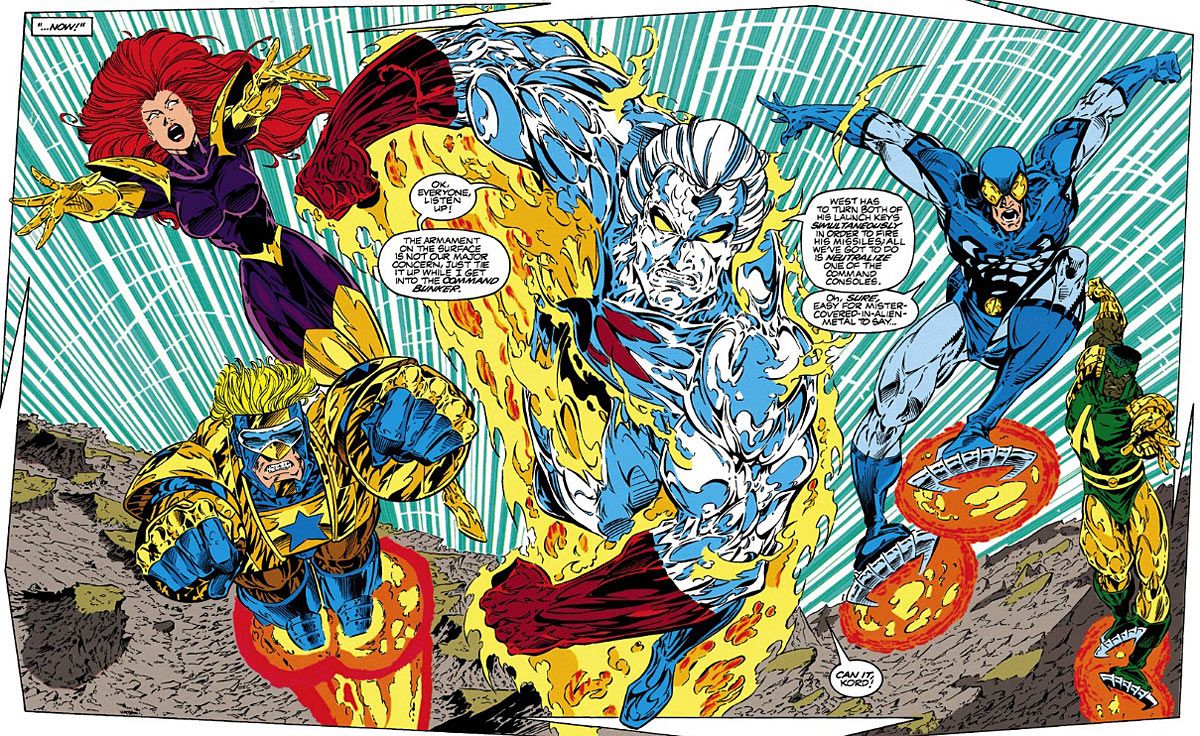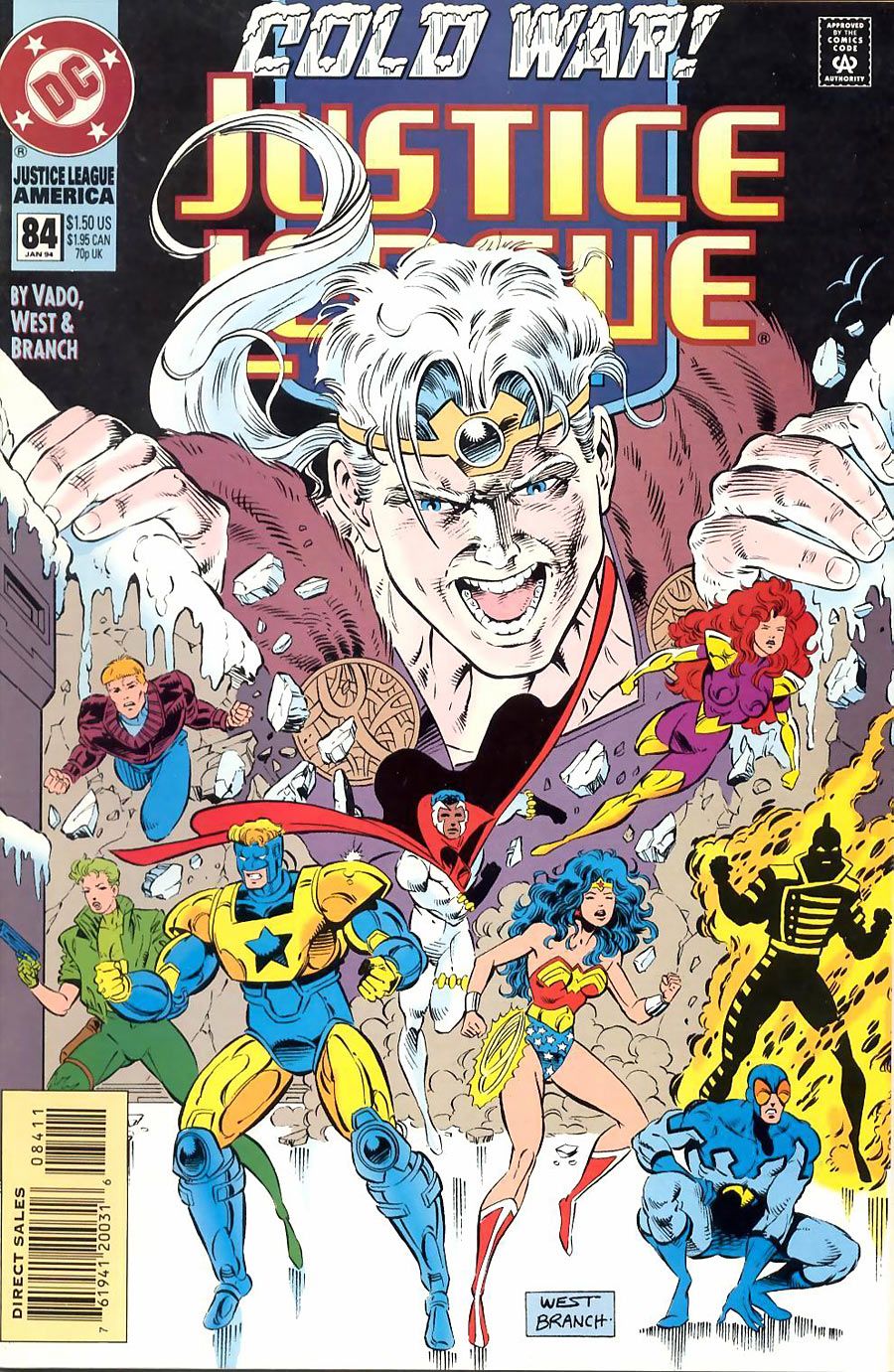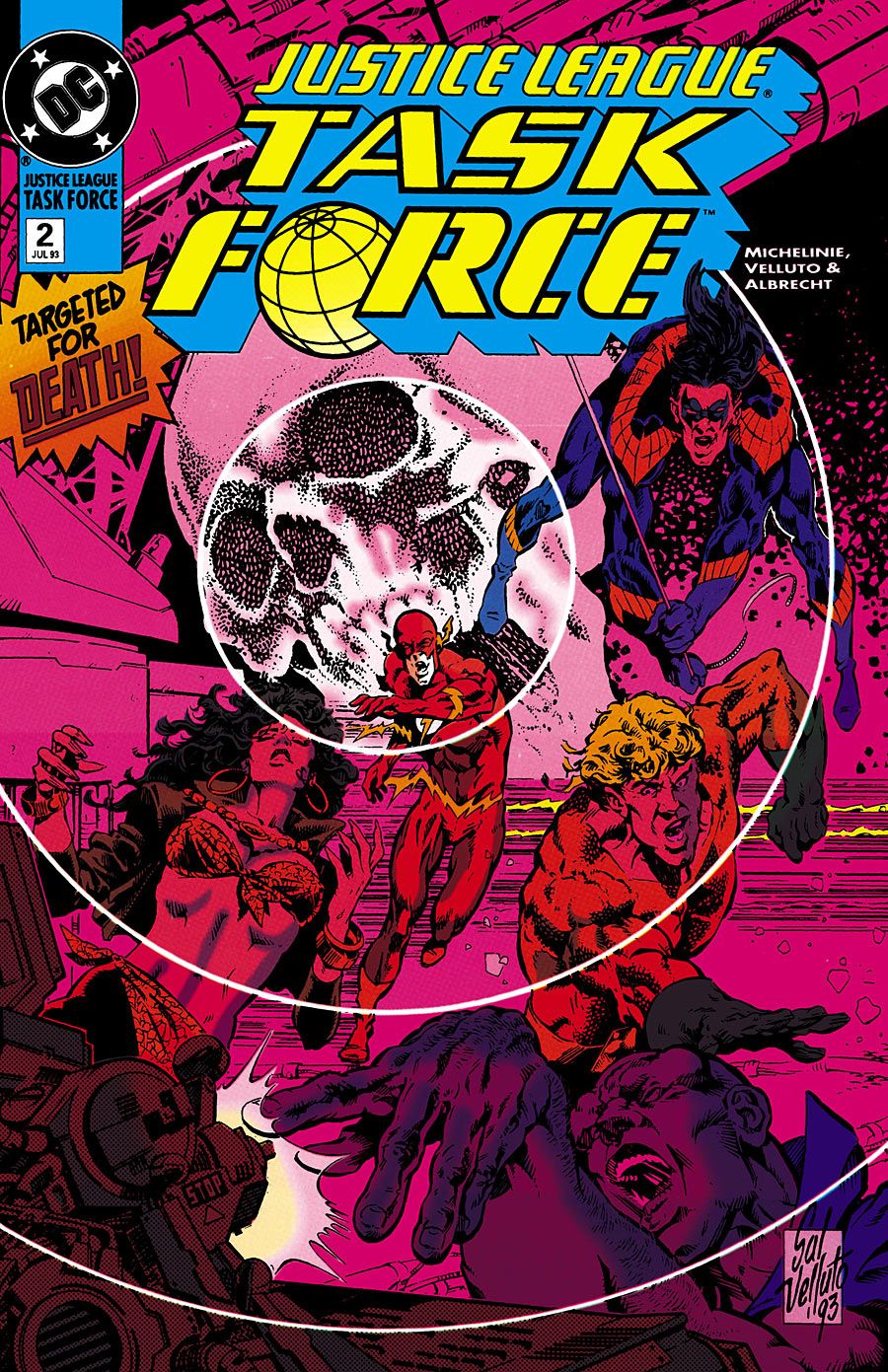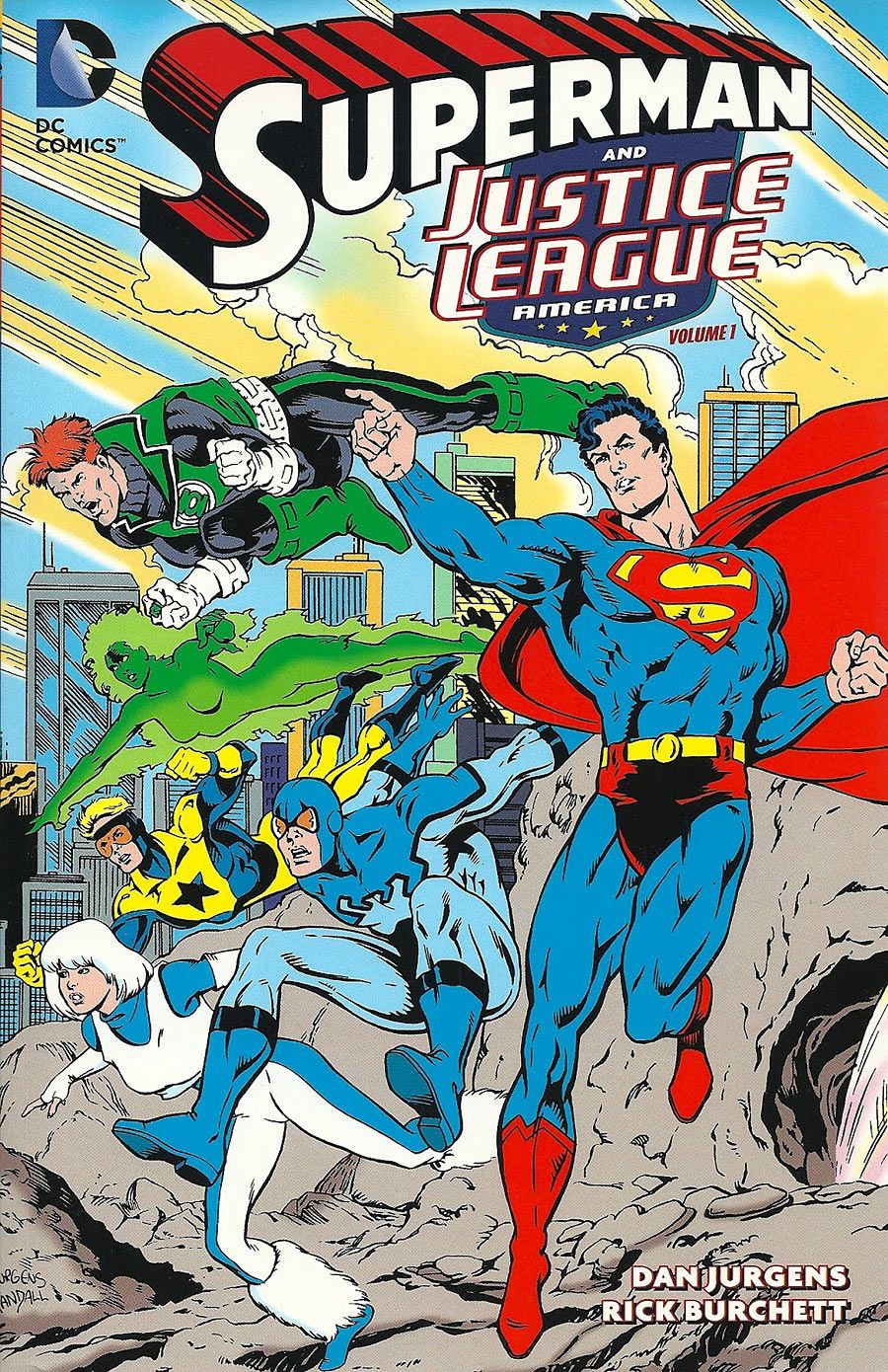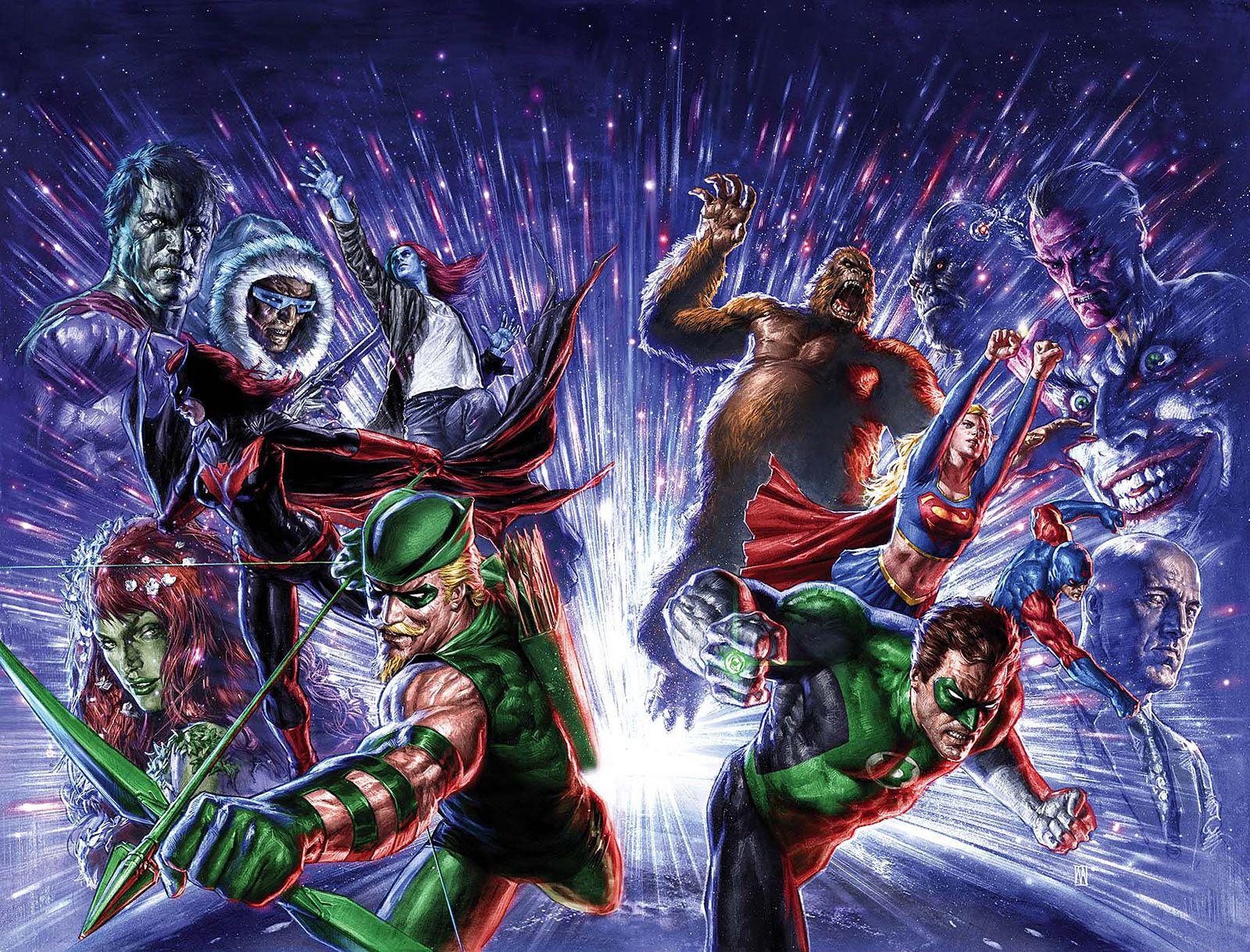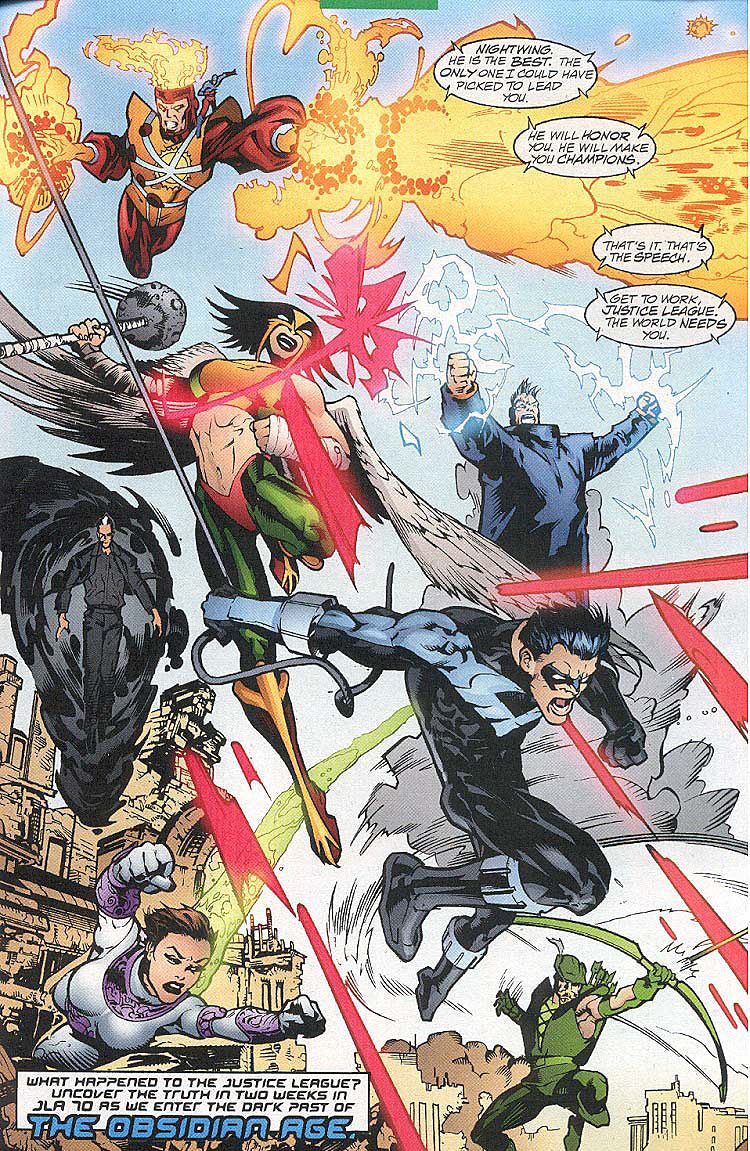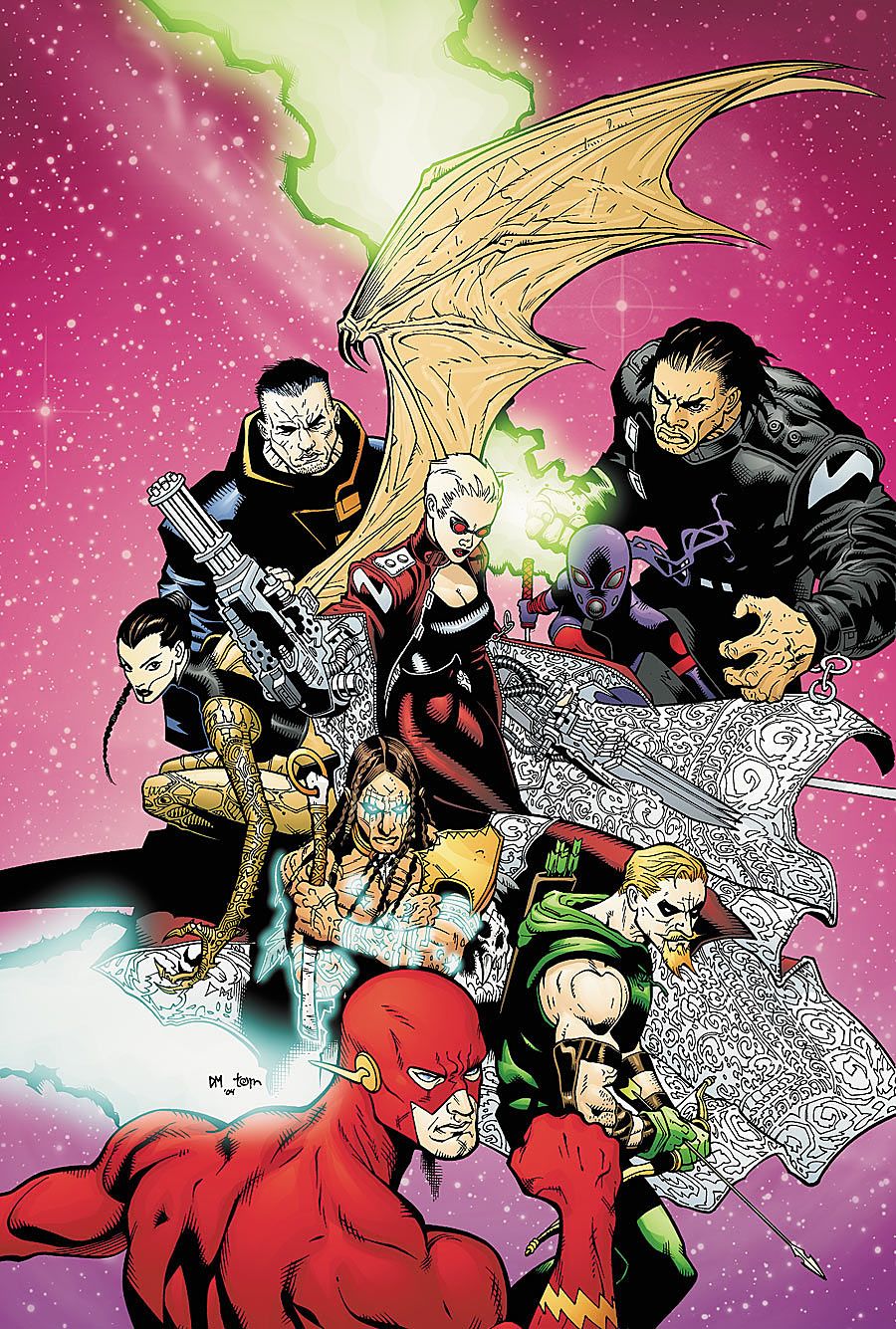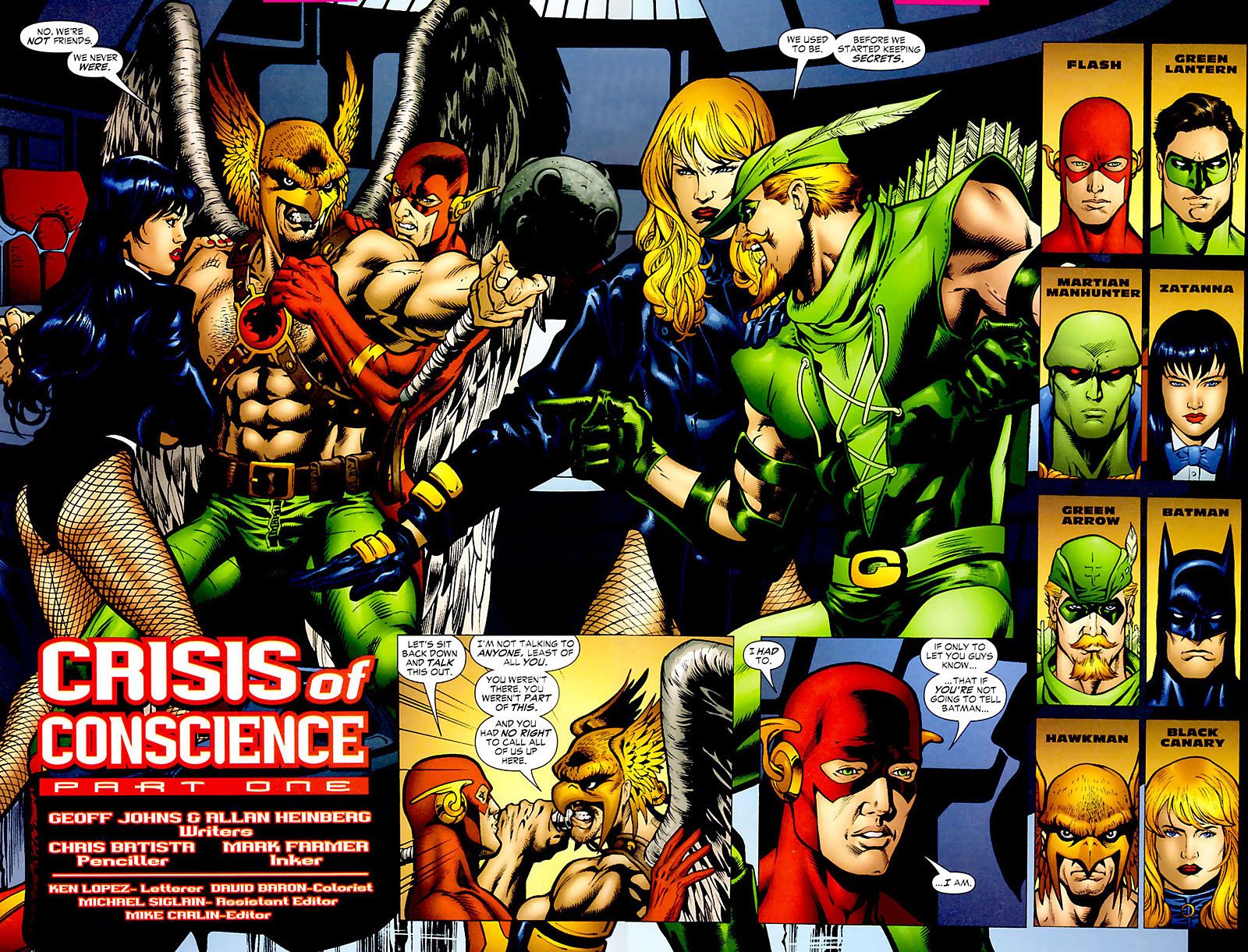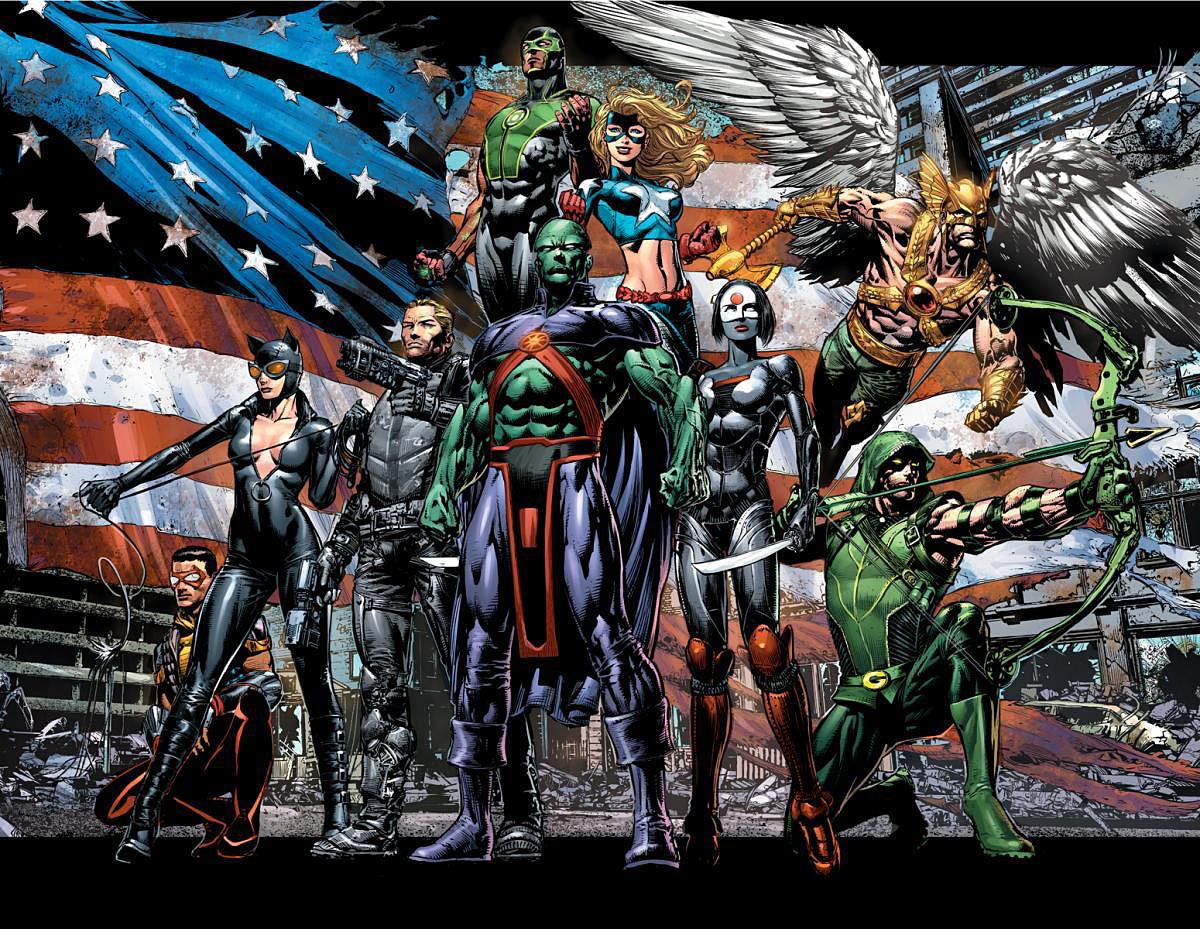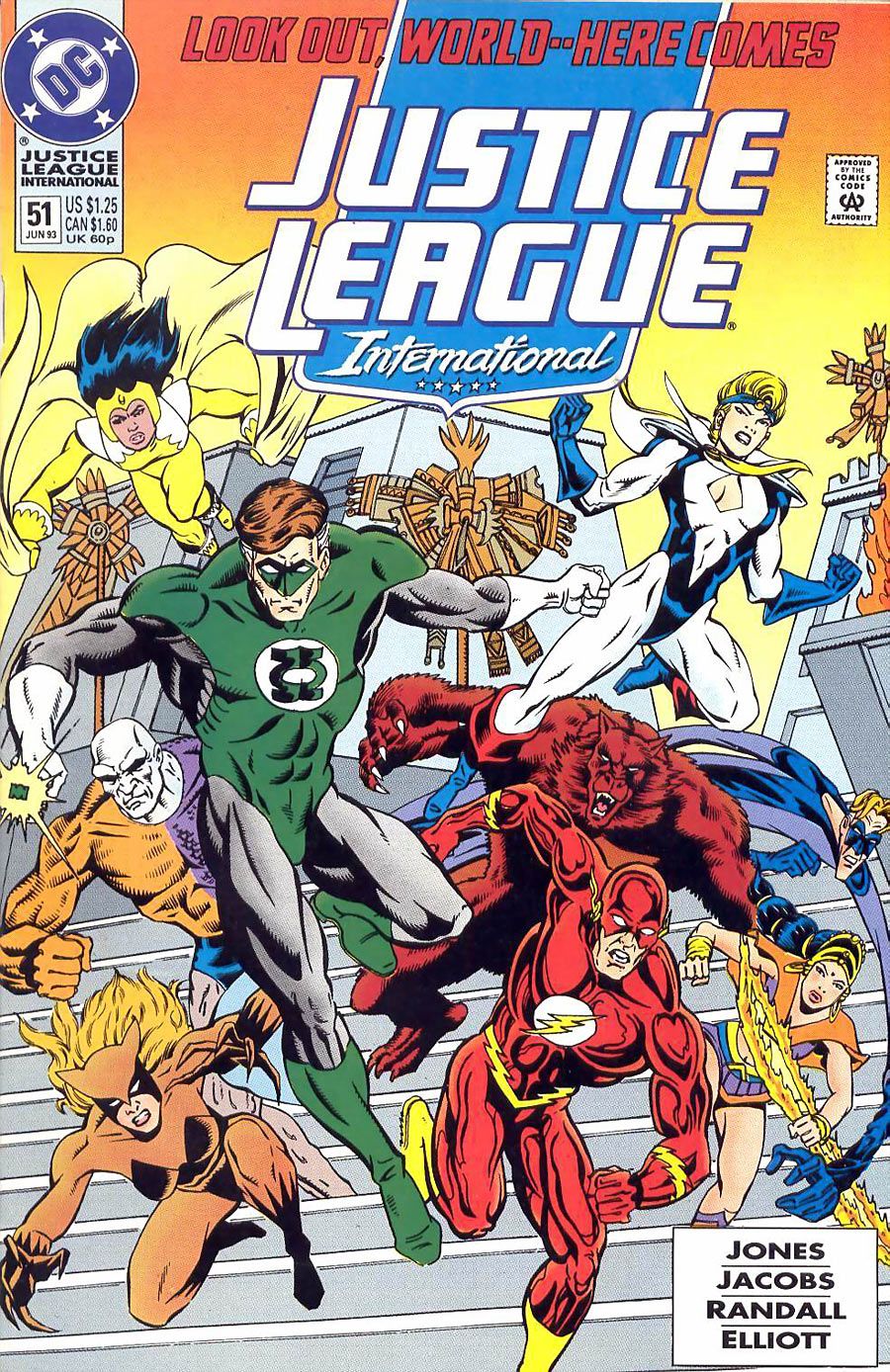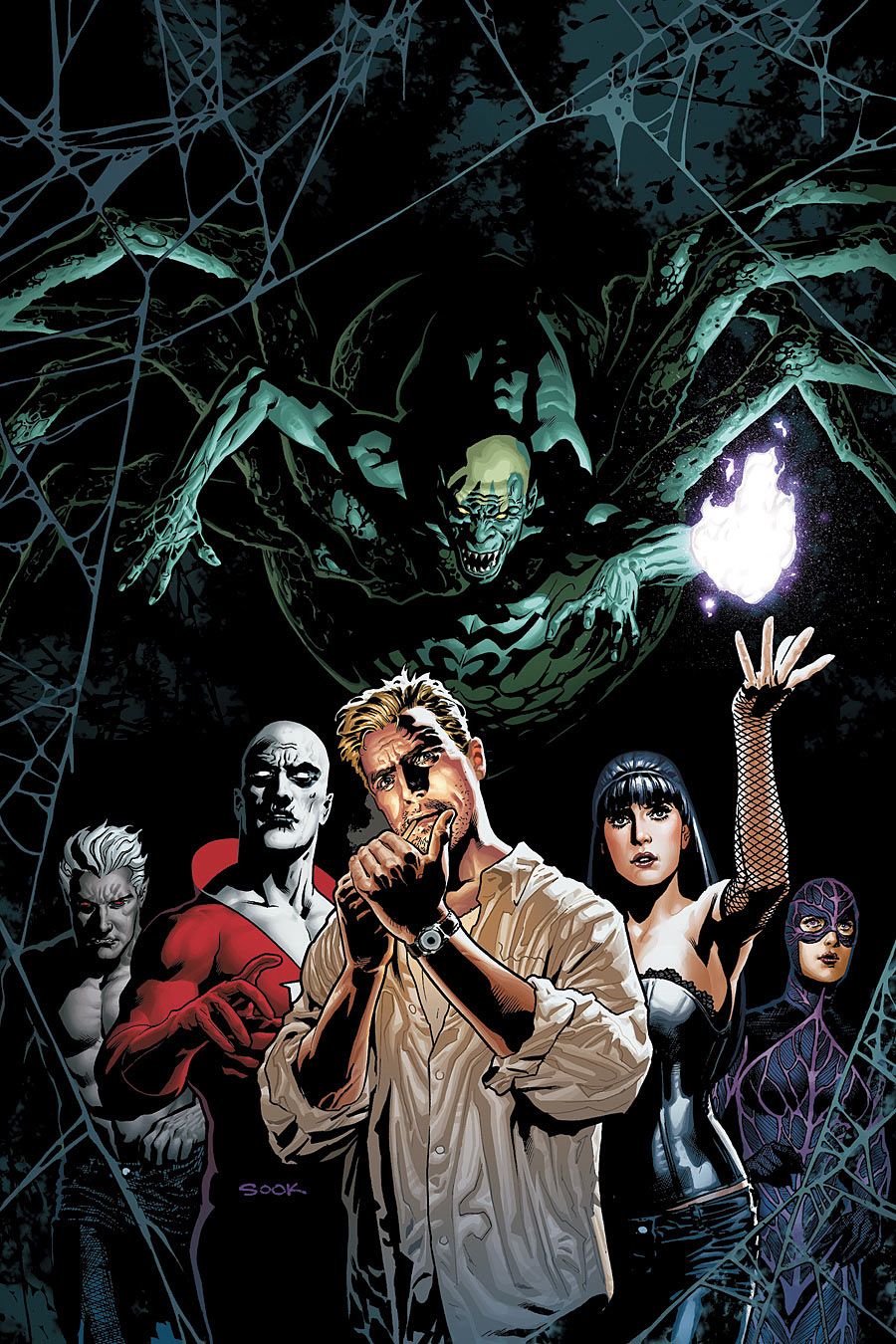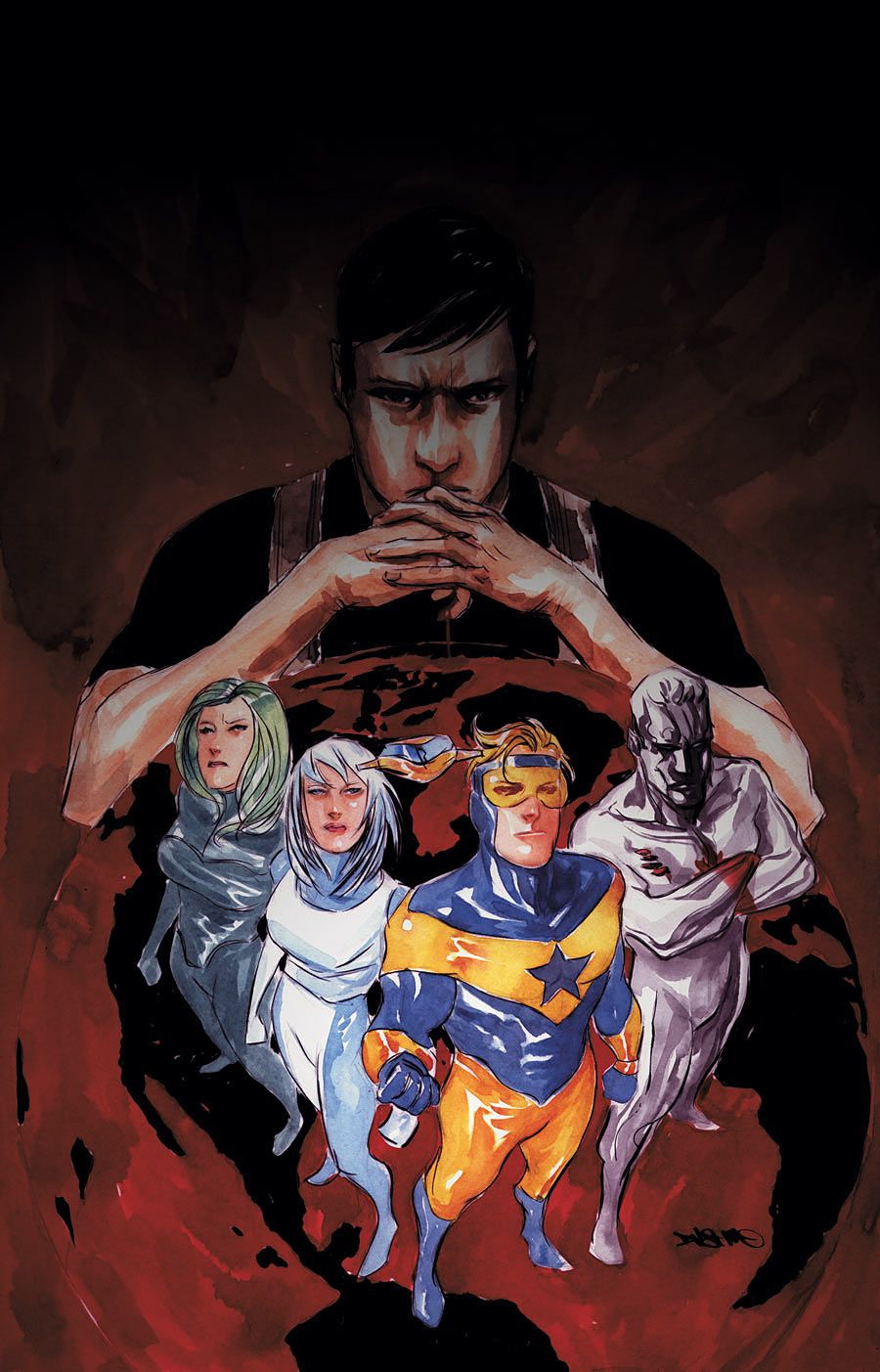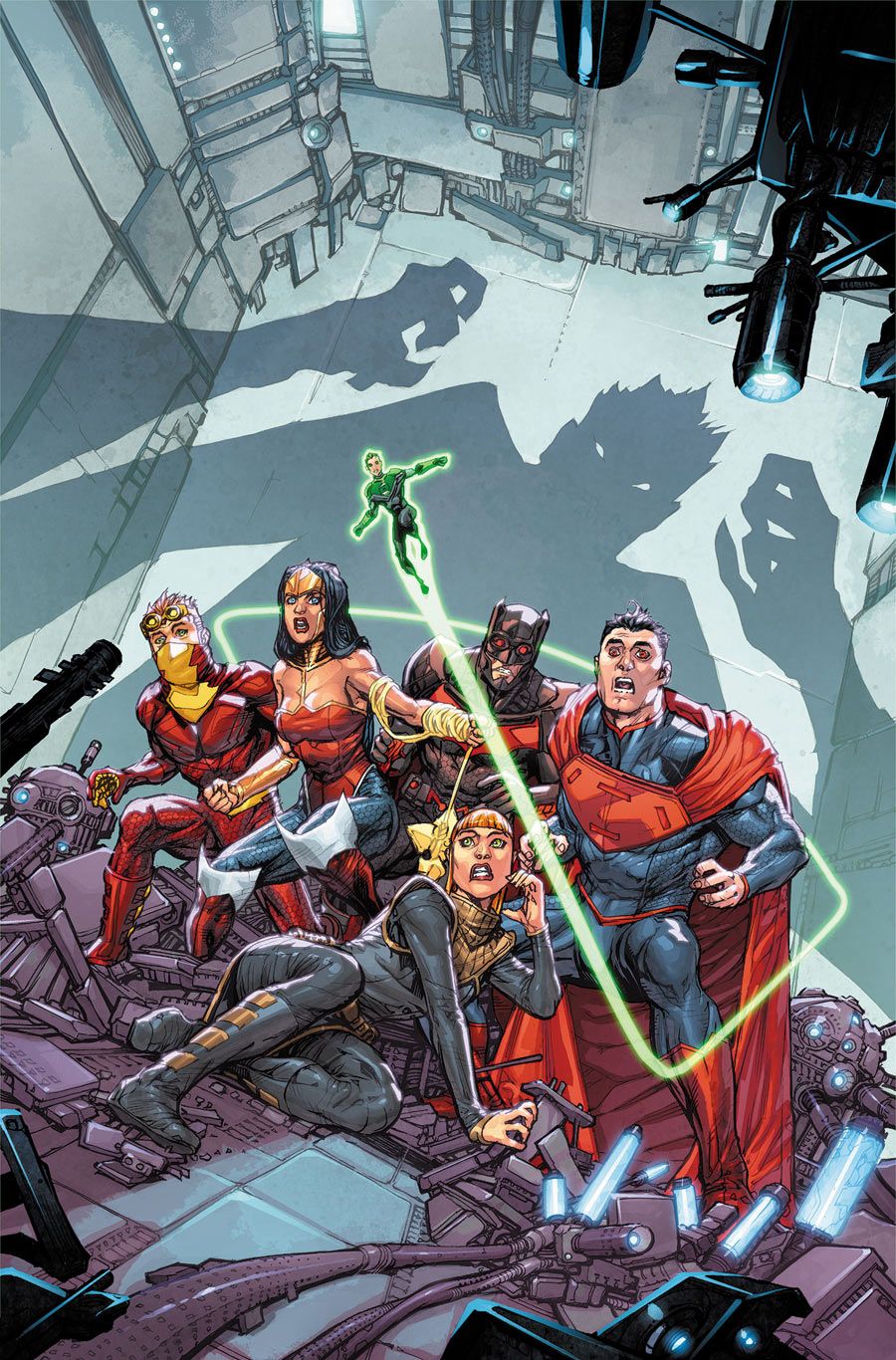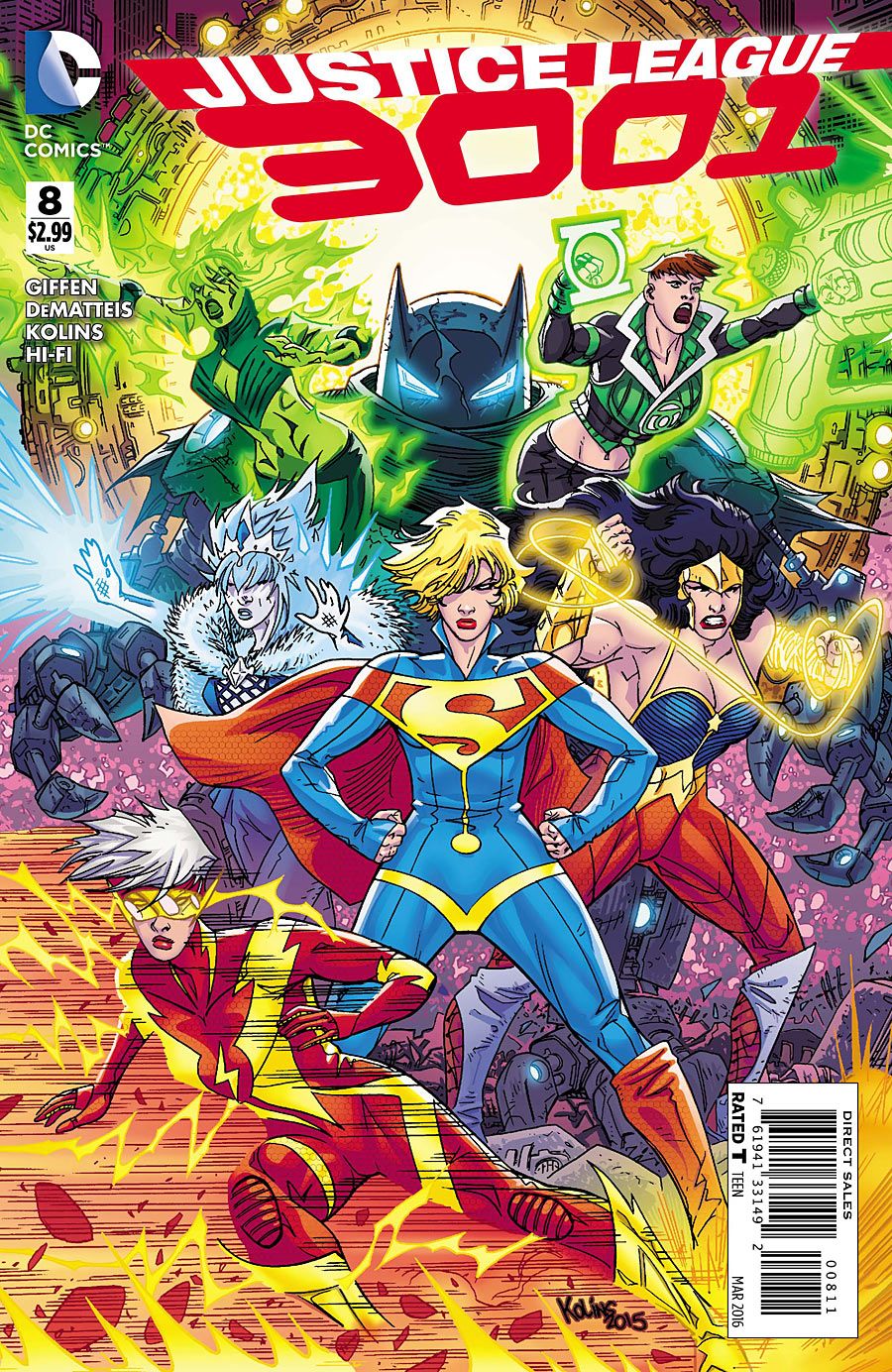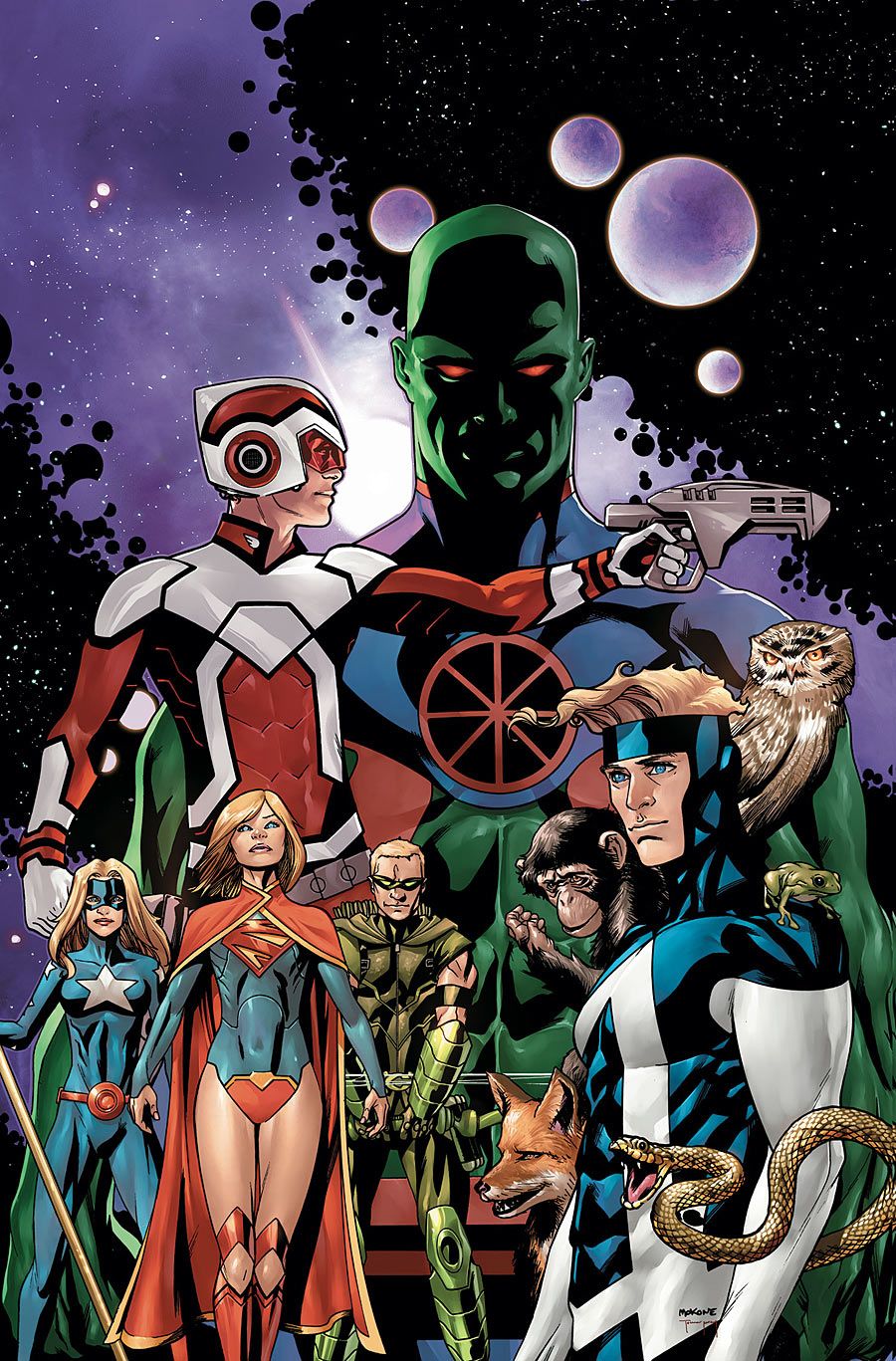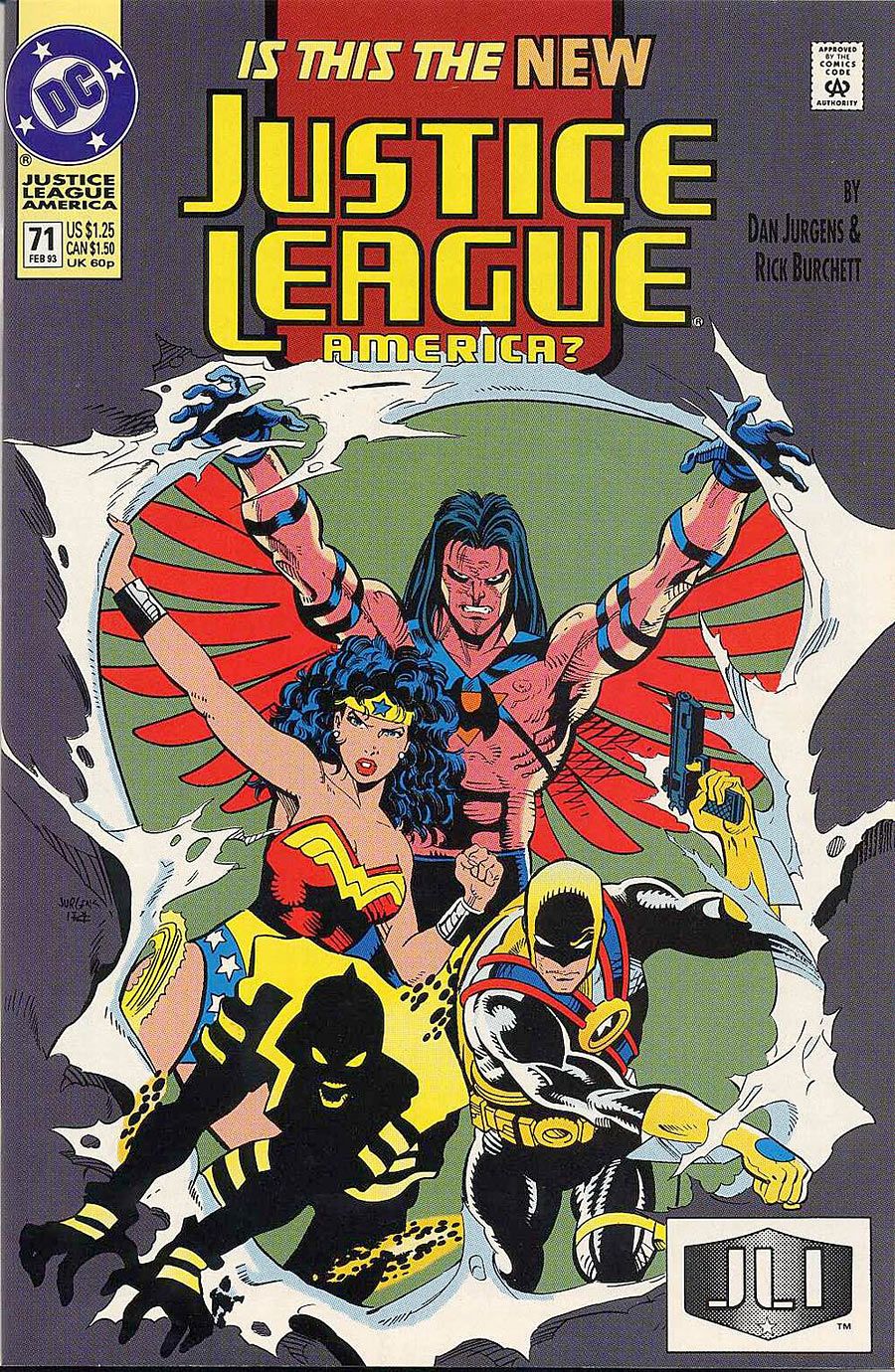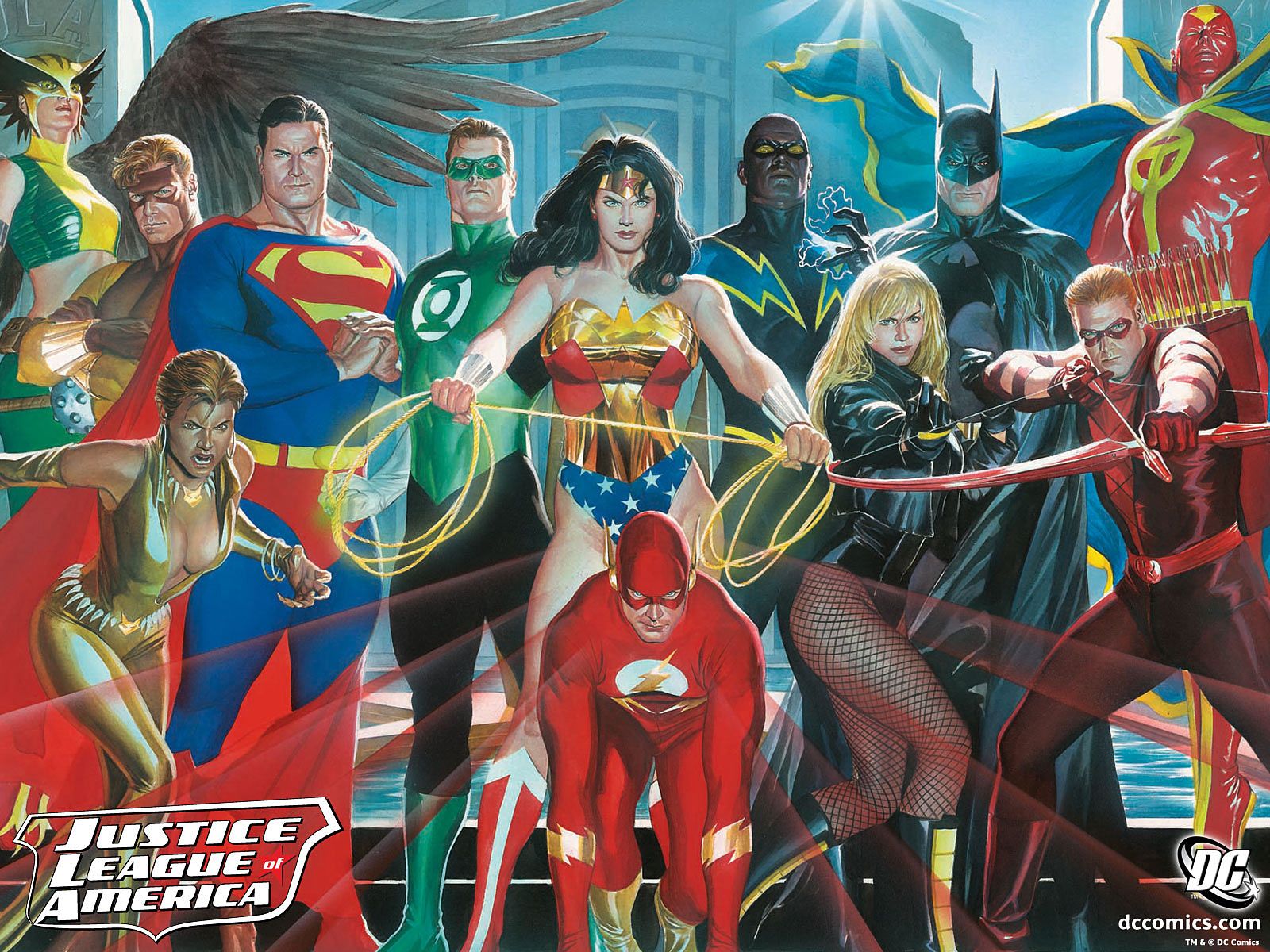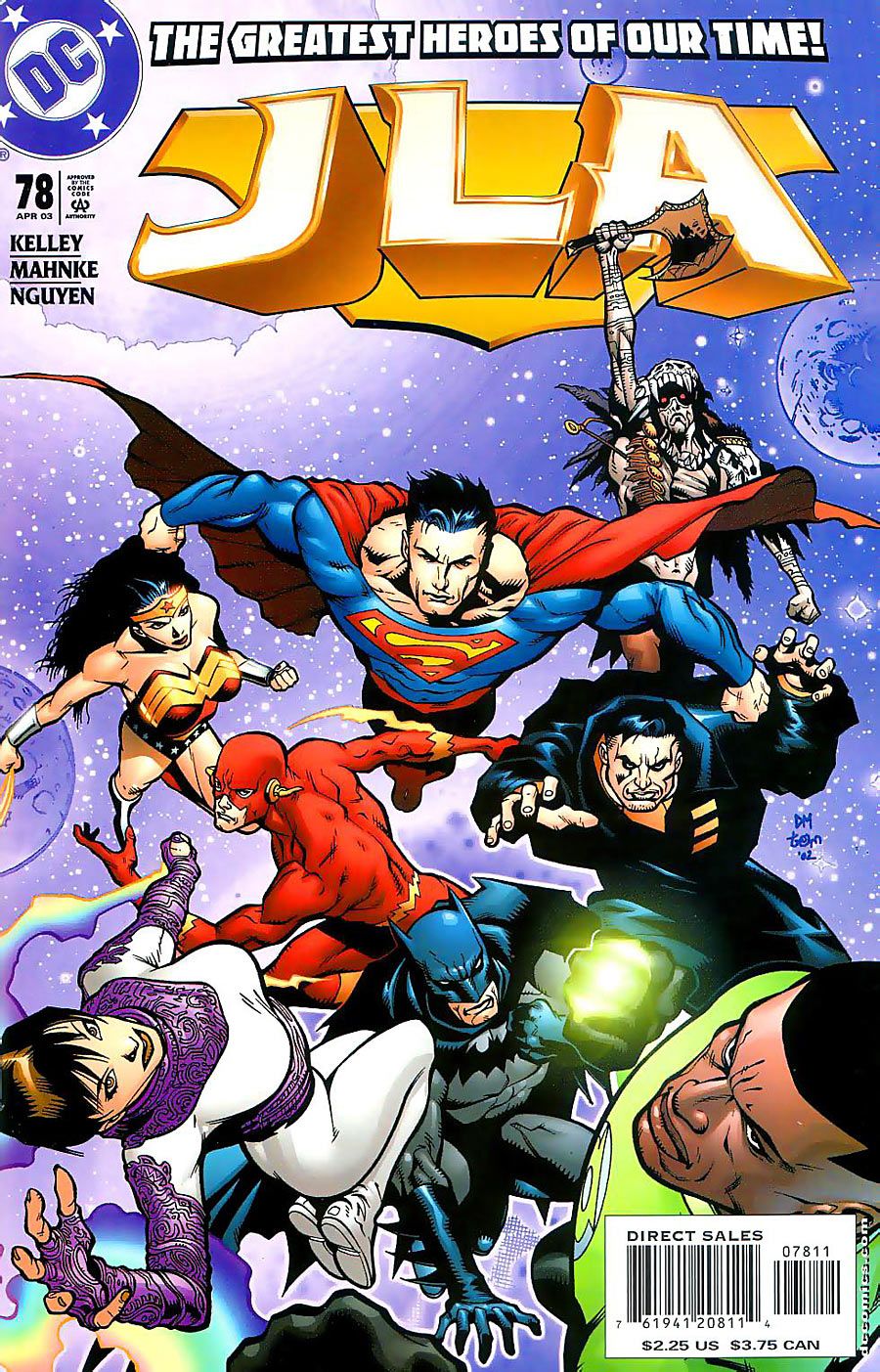The debut of "Justice League" #1 by Bryan Hitch and Tony S. Daniel showed readers what the next incarnation of the famed Justice League looks like during DC Comics' Rebirth. The Justice League has been around for over 50 years now, and the team's membership has been an interesting encapsulation of the history of the comic book industry itself.
RELATED: "Justice League" Is Your Summer Disaster Blockbuster, in Comic Book Form
When the League debuted at DC Comics in 1960, it had a constant membership and a constant creative team, with writer Gardner Fox writing the book for much of the 1960s. Even as Fox was succeeded by Denny O'Neil, Mike Friedrich, Len Wein, Steve Englehart and Gerry Conway during the late 1960s and throughout the 1970s, the book maintained a strong consistency. Heroes were added while others would take their leave (almost always temporarily, but some of the breaks were extended ones, like the Martian Manhunter missing out on much of the 1970s), but the League stayed basically the same. However, as the comic book market changed in the 1980s with the most popular team books being "New Teen Titans," "Legion of Super-Heroes," "Uncanny X-Men" and "New Mutants," all books starring younger heroes, the Justice League responded with their first wholesale new lineup in nearly 25 years with the creation of a Justice League featuring a number of young heroes in it.
Since that point, the League has gone through a variety of different rosters, while also relaunching at #1 for the first time in 1987. Another first came in 1989, with the League getting its first spinoff "Justice League" series when "Justice League Europe" spun out of "Justice League International." In the years since, rarely a month has gone by without at least two "Justice League" comic books released (in the early days of Grant Morrison's "JLA," these other series tended to be one-shots and miniseries), and quite often there have been three monthly "Justice League" titles.
As DC Rebirth continues to roll out, there will be one "Justice League" series shipping twice a month (Fernando Pasarin will share art duties with Daniel), while a second twice-monthly "Justice League of America" book looms in the future (with no creative team announced just yet). With so man incarnations of the Justice League over the years, we decided to rank them for you, from worst to best. In order to qualify, a roster has to exist for at least five issues (which eliminates one-issue joke lineups, like the "52" Justice League and Justice League Antarctica) and it has to be a distinct lineup (so Bryan Hitch's current "Justice League of America" lineup doesn't count).
Let's dive in and declare one Justice League lineup the World's Greatest Superheroes!
34 Justice League International (New 52)
Debuting as part of the DC's 2011 "New 52" initiative, Justice League International was a United Nations alternative to the "regular" Justice League, featuring heroes from different countries, including classic members Fire (Brazil), Ice (Norway), Guy Gardner (United States) and Booster Gold. The book was short-lived, and many of the characters were given short shrift as a result, with characters shuffling in and out of the book during its short run (some of the members barely even had a single line per issue).
33 Justice League America (Post-"Zero Hour")
The "main" Justice League book following Zero Hour splitting the Justice League titles up into three distinct series was perhaps the apex of the era where editors were very hesitant to let their characters actually be in the Justice League. As a result, this team was made up of some low level heroes that no one else was looking to use like Crimson Fox, Nuklon, Obdidian, Fire (but no Ice, as Ice was dead at the time), Blue Devil and Metamorpho, with Wonder Woman, Flash and Hawkman being the "big names" for the series (all three heroes appeared in books edited by the same editor of "Justice League America"). This League also had an odd "everyone can be a member!" approach, where the League was more of a hangout on their space station than anything.
32 Extreme Justice
Another one of the Justice League books spinning out of "Zero Hour" was "Extreme Justice," which was DC's answer to the edgy 1990s Image style of comic books (series like "Youngblood," "WildC.A.T.s" and "Cyberforce"), only with very non-edgy characters like Blue Beetle and Booster Gold in the mix. The series went through three different writers in its 19-issue run and as a result, the book greatly lacked in purpose. Its original selling point was that it was a Justice League (they never actually called themselves "Extreme Justice" in the comic itself, thank goodness) that would work outside the law, but the biggest plot in the series was them reacting to the plots of Monarch, who turned out to be the original Nathaniel Adam (with Captain Atom being a clone of sorts).
31 Justice League America (Pre-"Zero Hour")
Justice League America in the ten issues or so directly leading up to Zero Hour was a real mixed bag of superheroes, as incoming writer Dan Vado had basically two groups of superheroes to work with, the remnants of Dan Jurgens' initial Justice League America team (Blue Beetle, Booster Gold, Fire and Ice) plus the second group of heroes that Jurgens had added while the first group was out of the picture (Wonder Woman and Ray) with Maxima and Guy Gardner being constants between both teams. Vado then worked Captain Atom into the mix, as well, while also exploring Bloodwynd (who had been a team member, but only as a disguised Martian Manhunter -- now the real magical hero was a member of the team for the first time). The resultant mixture wasn't bad, per se, but it felt a bit like treading water.
30 Justice League Task Force (Pre-"Zero Hour")
Launched in 1993, "Justice League Task Force" was the first time that there were three monthly "Justice League" titles (it joined "Justice League America," "Justice League International" and "Justice League Quarterly" on the market). It was a unique roster in that there were only two official members of the team, the Martian Manhunter and his old Justice League teammate, Gypsy, now a little older and working alongside J'onn on a new government strike force where different superheroes would be chosen for different missions based on their skill sets. It was basically like "Mission: Impossible" for superheroes. There were different writers for each arc, so the book had its strong arcs and its weak ones.
29 Justice League America (Justice League Spectacular)
Following the departure of Keith Giffen and J.M. DeMatteis, DC was in a weird situation. The humorous approach of Giffen and DeMatteis was popular, but few writers could follow them in that vein. So they brought in Dan Jurgens to write and draw the series and added Superman (whose ongoing series Jurgens was also writing and drawing at the time) to the cast while keeping the most popular members of the previous series (Blue Beetle, Booster Gold, Fire and Ice). The result was a clash in tones, as Jurgens tried to honor the fans of the previous League by doing as much humor as he could but also making the book more of a traditional superhero series. After just nine issues, Jurgens used Doomsday and the Death of Superman to weed out the roster, with Doomsday extinguishing Fire's power, destroying Booster Gold's costume and putting Blue Beetle into a coma (Ice then left, as well, due to the traumatic events).
28 Cry for Justice
Green Arrow and Green Lantern split from the Justice League to form their own, more proactive Justice League, in this miniseries written by James Robinson and drawn by Mauro Cascioli. However, they instead found themselves at the mercy of the evil Prometheus, who effectively declared open war on superheroes. Green Lantern and Green Arrow were joined by Congorilla and Starman (Mikaal Tomas) after they each lost someone close to them. They were also joined by both Atoms (Ray Palmer and Ryan Choi) and Supergirl. When Robinson took over the main "Justice League of America" title, he brought most of these characters with him.
27 Obsidian Age Justice League
We almost opted not include this League, as it is debatable whether it actually appeared in five issues, but since the "Obsidian Age" crossover itself lasted more than five issues, we figured we might as well count it. During "Obsidian Age," the Justice League appeared to have been killed. Batman had a protocol put into place that would create a new Justice League team if the main team died. It consisted of Nightwing (as team leader), Green Arrow, Atom (Ray Palmer), Firestorm, Jason Blood, Hawkgirl, Faith and Major Disaster. This League disbanded when the main League was discovered to still be alive. However, a few of the members of this group stuck around.
26 Justice League Elite
Joe Kelly and Doug Mahnke had famously introduced a parody of the Authority known as The Elite in an issue of "Action Comics." However, Kelly and Manhke then decided to try to redeem the Elite by having them come under the wing of the Justice League. This was handled in a twelve-issue maxi-series called "Justice League Elite," where the sister of the original leader of the Elite formed a new Elite, with a few Justice League members joining in to keep an eye on the team as they do black ops that the main Justice League could never do themselves. Green Arrow, Flash, Major Disaster and Manitou Raven were the Justice League members who joined Elite members Sister Superior, Menagerie, Coldcast and Naif al-Sheikh (Cassandra Cain also secretly joined to keep an eye on the team).
25 JLA (Post-"Identity Crisis")
The last ten issues of "JLA" had a strange roster, where heroes who had not been members of the Justice League in years suddenly were regular cast members in the book, as events during the "Identity Crisis" miniseries revealed secrets that occurred during the "Satellite Era" of the Justice League, and thus the members from that era were suddenly working together again, even as they bickered with each other over their respective roles in what had happened in the past (where the League had been using Zatanna's magic to mess with the minds of some of their former villains, including making a few of them "decide" to become heroes themselves). So Green Lantern (Hal Jordan), Hawkman, Green Arrow (Oliver Queen), Black Canary, Zatanna, Martian Manhunter, Flash (Wally West) and Batman all had it out, with the League effectively disbanding. However, the individual heroes still remained in the title, even sometimes working together to fight crime. This lasted until Infinite Crisis, when "JLA" was finally canceled.
24 Justice League of America (New 52 -- United States government team)
Following the events of "Throne of the Atlantis," which saw King Orm attack the surface world and forced Aquaman to choose between his loyalties to Atlantis and the League, the United States government decided that they needed their own Justice League team. Amanda Waller and Steve Trevor put together a squad of heroes who would work directly for them, with Trevor acting as their field leader. The membership included Hawkman, Martian Manhunter, Katana, Vibe, Stargirl, Green Lantern (Simon Baz -- who had been in government custody, and this was the way he was able to get out of said custody), Green Arrow and Catwoman. The idea of the team was that if the main Justice League ever went rogue (which seemed to occur during "Throne of Atlantis," with Aquaman's people seeming to attack the surface-dwellers) this new League would have someone to counter each of the main Justice League members.
23 Justice League Europe/International
Gerard Jones had already been scripting "Justice League Europe" over Keith Giffen's plots for over a year, so the transition following Giffen's departure from Giffen to Jones went a lot smoother than the transition from Giffen/DeMatteis to Jurgens. Jones added Green Lantern (Hal Jordan), Aquaman and Doctor Light (Kimiyo Hoshi) to replace the outgoing Captain Atom, Rocket Red, Blue Jay and Silver Sorceress (Silver Sorceress had been killed during the "Breakdowns" crossover). Jones kept Power Girl, Flash, Metamorpho, Elongated Man and Crimson Fox. Jones maintained an offbeat approach for the series, which eventually evolved into the book changing its scope from just Europe to becoming the official international version of the Justice League after "Justice League Europe" #50, with the book becoming "Justice League International" for its final 18 issues.
22 Justice League Dark
Realizing that the regular Justice League was particularly vulnerable to magic (especially Superman), a special team was formed in the New 52 unofficially dubbed Justice League Dark. This group of characters would handle the supernatural threats that the main League weren't suited to handle, plus certain darker things that the more heroic League members would perhaps find a bit distasteful. Originally led by John Constantine, Zatanna was a key player in the team and eventually took over the leadership of the team from Constantine. Regular members in the group over the years included Deadman (the steadiest member of the team), Madame Xanadu, Frankenstein, Shade the Changing Man, Nightmare Nurse, Black Orchid and, toward the end of the series' run, Swamp Thing.
21 Justice League Generation Lost
Following the events of "Blackest Night," Maxwell Lord was alive and well, but he had erased his existence from the minds of everyone in the world. Everyone, that is, except for those heroes who had worked closely with him in Justice League International. So Booster Gold, Fire, Ice and Captain Atom teamed up (along with the new Blue Beetle, Jaime Reyes, and a new Rocket Red) to bring Maxwell Lord to justice, while trying to convince their fellow superheroes that they have not simply gone insane themselves. It was a fine tribute by writer Judd Winick to the classic "Justice League International" years.
20 Justice League 3000
This future version of the Justice League by writers Keith Giffen and J.M. DeMatteis and artist Howard Porter, saw the Justice League revived by Cadmus, a genetic engineering corporation. Specifically, the genetic coding of Superman, Green Lantern, Batman, Wonder Woman and The Flash were bonded with volunteers. The end result were mixtures of the original heroes and the people who the genetic material had been bonded with. The end result were heroes much different than the original Justice League, but they were at least going to try to still be heroes, even if it got them killed. Sadly for them, most of them did end up dying while trying to live up to their heroic genetic predecessors.
19 Justice League 3001
The sequel to "Justice League 3000" (with Giffen and DeMatteis now joined by Scott Kolins on art) saw a new League form from the ashes of the original squad, with Fire and Ice both joining the team (they both were able to survive into the future through very different means -- Ice was a goddess, so she lived as a deity for centuries while Fire was stuck in hell during this time), a female clone of Guy Gardner, the new Batman, an orphaned descendant of Bruce Wayne who built a Batman suit of armor, and the 21st Century Supergirl (awakened in the future after being frozen in time), plus Wonder Woman and Flash (the second Flash) from the previous League. This League was almost more dysfunctional than their predecessors!
18 Justice League United
Following the disbanding of Justice League of America during the events of "Forever Evil," the remaining members of the team (Stargirl, Green Arrow and Martian Manhunter) headed to Canada (along with new members Animal Man, Supergirl and new elemental Canadian hero, Equinox) where they got caught up in an interstellar adventure courtesy of Adam and Alanna Strange. There was a lot of turnover in Justice League United membership during the brief run of the series, with Stargirl, Equinox and Alanna Strange being the most consistent members of the team.
17 Justice League America (Post-"Death of Superman")
After the death of Superman and the loss of Fire, Ice, Blue Beetle and Booster Gold, the Justice League needed new members, and "Justice League America" writer Dan Jurgens and editor Brian Augustyn went to familiar spots, bringing in Agent Liberty (who Jurgens had created over in the pages of "Superman), Black Condor (whose series Augustyn wrote) and Wonder Woman and the Ray (whose series Augustyn edited). This was the lineup that was present for Jurgens' best arc during his time as the writer of Justice League, as the old Justice League enemy Doctor Destiny had created a nightmare world where the Justice League acted as tyrants. The dream world was beginning to interact with our world, so the newly formed League had to enter this world to stop things before they went too far. The new League took out the nightmare League, while in the process discovering that their teammate Bloodwynd was actually the Martian Manhunter in disguise! Jurgens ended his run on "Justice League America" by bringing the Martian Manhunter back (while keeping Bloodwynd in play as a separate character).
16 Justice League of America (Post-"Infinite Crisis")
Following the events of "Infinite Crisis," in "Justice League of America" #1 (by Brad Meltzer, Ed Benes and Sandra Hope), Batman, Superman and Wonder Woman sat down to select a brand-new Justice League team. However, as is often the case, their original plans were thrown out as circumstances ended up dictating the membership of the new League, with Red Tornado, Red Arrow (the hero formerly known as Arsenal), Black Canary, Vixen, Geo-Force, Hawkgirl, Black Lightning and Green Lantern (Hal Jordan) joining the team. In an early storyline, Flash (Wally West) returned to the team, as well. It was a nice mixture of classic Justice League heroes with some relatively newer characters mixed in who had never gotten the chance to be League members before. Black Canary became the leader of the team and eventually John Stewart joined as a second Green Lantern. Dwayne McDuffie inherited this team, but slowly had heroes taken away from him as time went by.
15 JLA (Post-"Obsidian Age")
After the "Obdidian Age" storyline ended, Joe Kelly added a few members of the temporary Justice League, namely Faith and Major Disaster, to the reformed Justice League. In addition, Kyle Rayner had left Earth in the hands of John Stewart, so Stewart joined the Justice League in Kyle's place. Plus, the shaman Manitou Raven, who had aided the League during the Obsidian Age, joined the team, as well. It was a nice mixture between the classic League and Kelly's off-beat sensibilities.

